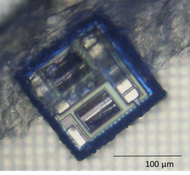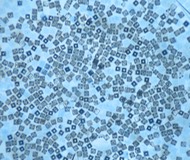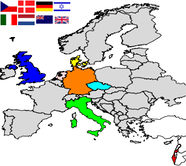The overall objective of WP 2 is the specific assembly of two lablet microchips (to form an aligned structure with inside channels and electrodes which we call a gemlab) and their disassembly triggered by an electrical signal or combination of electrical and chemical signals. The specificity of parallel pairing of many lablets dispersed in solution will be realized by encoding them with DNA and hybridizing lablets that have complementary sequences. The disaggregation of gemlabs will be achieved by mechanical separation of polymeric surface layers that undergo stimuli induced phase changes like swelling or by DNA layers that dehybridize in response to pH changes or metal ions. Another integral part of WP 2 is the investigation of reversible electrical contacts between different lablet devices mediated by metallic carbon nanotubes that are dispersed with DNA block copolymers. Self-assembly processes will first be tested using passive lablets and passive DNA-patterned substrates and docking stations. Disassociation will be first tested on the docking station and later between lablets. The reversible dissociation of lablets will be performance optimized using the Evolutionary Design of Experiments computational technique developed in WP10.
Lead RUG Partners HUJI, RUBb,a




